What if you give your horse a toy and they’re terrified instead of having a great time? What do you do when the new horse toy you bought or created is so scary that your horse won’t go near it? If your horse is scared of toys, they’re missing out on the benefits of equine enrichment. Here’s what to do when your horse is afraid of their toys and enrichment.
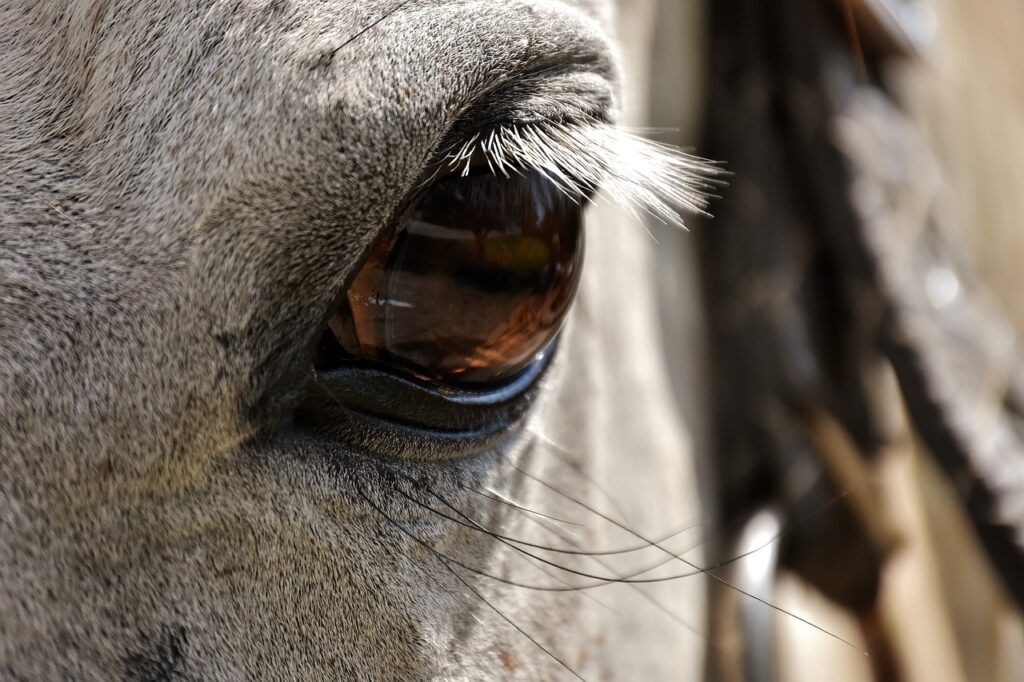
Image by 🎄Merry Christmas 🎄 from Pixabay
Why Is My Horse Scared of Toys?
If your horse is scared of toys or afraid of their newest stall enrichment, they’re experiencing neophobia.
Neophobia is the fear of new or unfamiliar things, and it can be a headache for you and your horse.
Neophobia is fear of something new (“neo” meaning “new,” and “phobia” meaning “fear.” It’s a normal behavior that helps keep wild horses safe, and it happens in other animals too. Even people can have neophobia! In humans, neophobia sometimes shows up in toddlers as an anxiety around new foods.
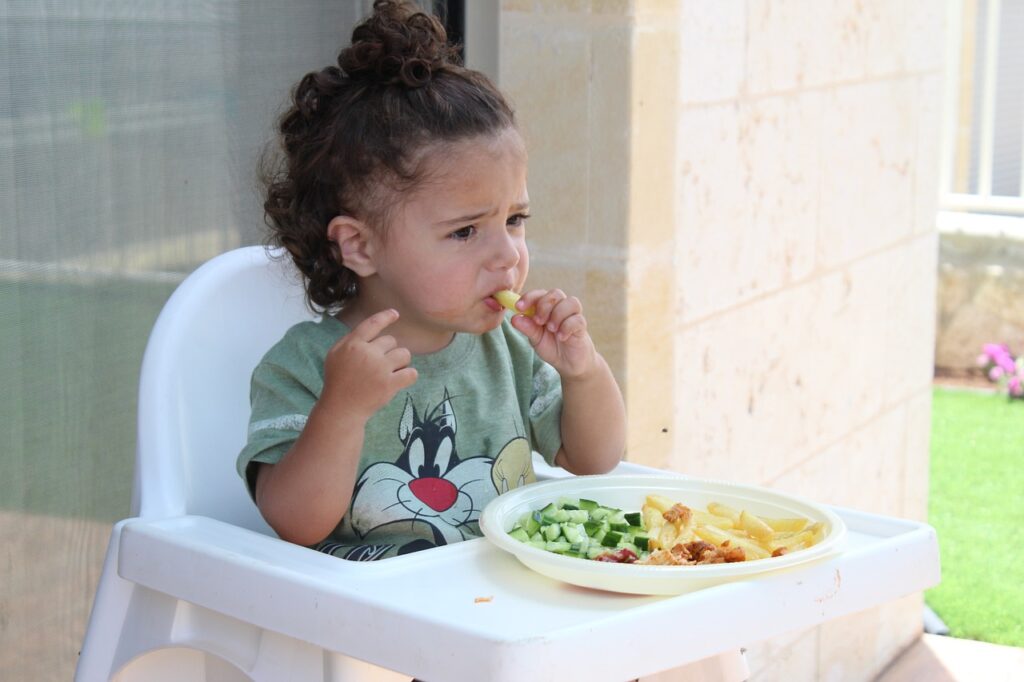
Image by avitalchn from Pixabay
Is It Normal for Horses to be Scared of Toys?
Caution around new enrichment or toys is normal for horses. Curiosity has benefits, but your horse’s instincts guide them to be cautious around new objects. But when that natural caution shows up as irrational or extreme fear of enrichment, it’s not ideal for your horse or you.
A paralyzing fear of new objects means that the horse won’t get all the great benefits of enrichment. After all, enrichment for horses means encouraging their natural behaviors, and being scared of toys definitely gets in the way. If they’re scared of new items, your horse won’t be relaxed or entertained by toys in their stall or pasture.
The good news is that you can help your horse be less afraid of toys. And the more effort you make to help them with their neophobia, the more open they’ll be to new toys in the future.
How to Tell If your Horse Has Neophobia
All horses sometimes spook and startle at new or unfamiliar objects. That’s a very normal horse behavior. But if you’re having no success with toys and fear seems to be the cause, neophobia may be to blame.
Neophobia in horses is more than just a simple caution or brief hesitation to approach a new object. A horse who is phobic of new items can be so intensely fearful that they sometimes won’t even enter the side of the pasture where the new toy is located! If your horse just avoids or ignores the toy but doesn’t seem afraid, they may simply need to learn how to use their new toy.
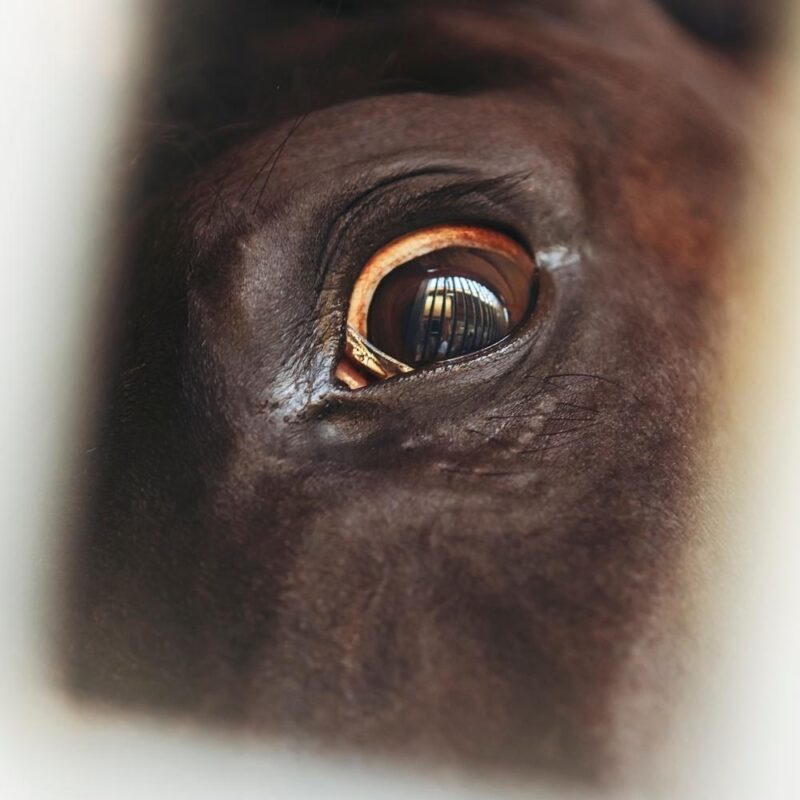
These behaviors can be signs that your horse is experiencing unusual fear of their new toys and enrichment:
- Fixation on the new item, keeping distance but monitoring the new toy at all times
- Strong avoidance, staying away from the part of the paddock where the toy is located
- Choosing not to eat or drink if the scary object is near food or water
- Strongly fearful body language such as wide eyes, rigid posture, snorting, and bolting
- Panicked behavior if forced to approach the new toy or locked in a stall with it
How to Help Your Horse Be Less Scared of Toys
There are several steps you can take to help your horse be less afraid. It’s worth the effort to help your horse overcome their fear.
Identify the Triggers
Some horses are scared of every new toy, but sometimes fear is triggered by certain types of items or materials. Check your new toy for:
- Unfamiliar shapes, especially objects with hard edges
- Abrupt and unexpected changes to a familiar environment
- Bold patterns
- Loud sounds and objects they believe may create them
- Things that move, especially unexpectedly or in a jerky, irregular way
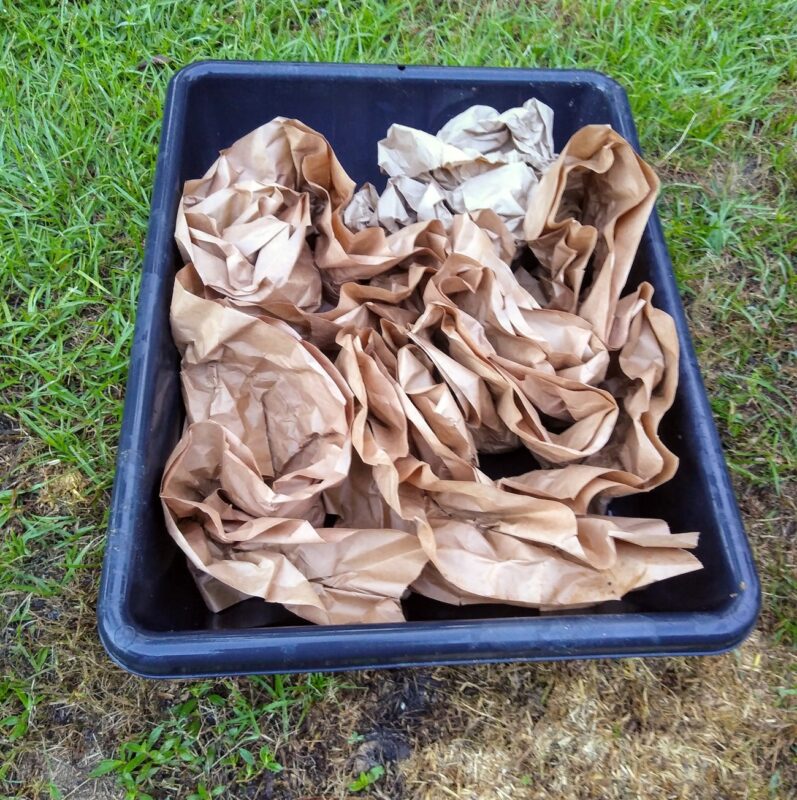
For example, a cardboard forage box’s flaps can catch the wind and move suddenly and at random, convincing the horse that the object is “alive” and dangerous. Or a puzzle item packed with paper may make a sudden scary noise when the horse begins to interact, triggering phobia.
Don’t Bubble Wrap
When your horse is scared of toys, your first instinct might be to take the toys away and not give it to the horse again. But this bubble wrap approach doesn’t do your horse any favors.
First neophobia tends to be pretty general, not specific, so it’s likely that even if you remove this “scary” object, the horse may be frightened by the next one, or the one after that. By not working on the phobia, your horse misses out on the benefits of that type of enrichment.
Second, neophobia only improves with careful, gentle exposure. Most horses can become much less afraid and more curious, but not if they never see any scary toys.
Instead, go for a two-pronged approach to introducing new enrichment: making sure the item is as nonthreatening as possible, and offering the new item frequently.
Gradual Exposure to New Horse Enrichment
The best way to help your horse be less afraid of toys is through gentle, gradual exposure. Never force your horse to approach a new object or toy. Don’t pull them up to it by their halter and lead, or put a new toy in the stall with them.
Instead, bring the scary toy to a pasture or paddock where your horse can approach or avoid. Place it far away from gates, water, food, or shelter spaces – but do add hay a few meters/yards away for your horse to munch as their confidence grows.
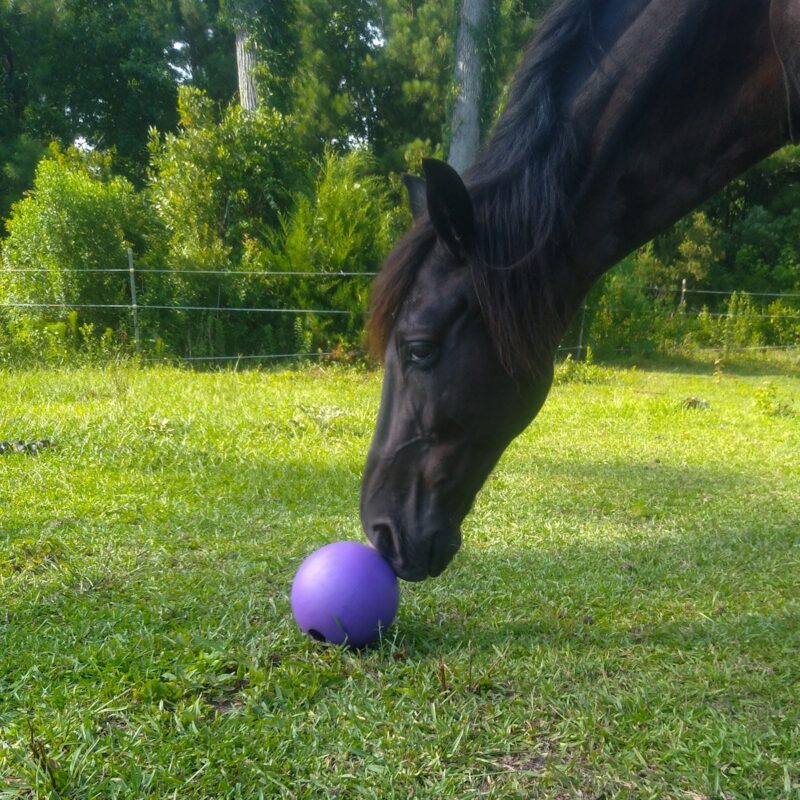
Keep the new toy in the paddock with your horse for a short length of time, then take it away. Repeat as often as you can, and leave the toy in the paddock a little longer each time.
When your horse can eat near the toy or walk up and sniff it without fear, they’re ready to learn how to use the toy or puzzle. To help them, make your horse’s toy as non-scary as possible.
Make the Toy Less Scary
Remember, horses are prey animals. When they display fear of something, they aren’t doing it to be silly! A phobic horse believes that something about the item or situation could hurt them.
To help your horse overcome a fear of new things, make your toys as non-scary as possible during the learning process. As they get confident, they’ll be able to handle more complex horse toys.
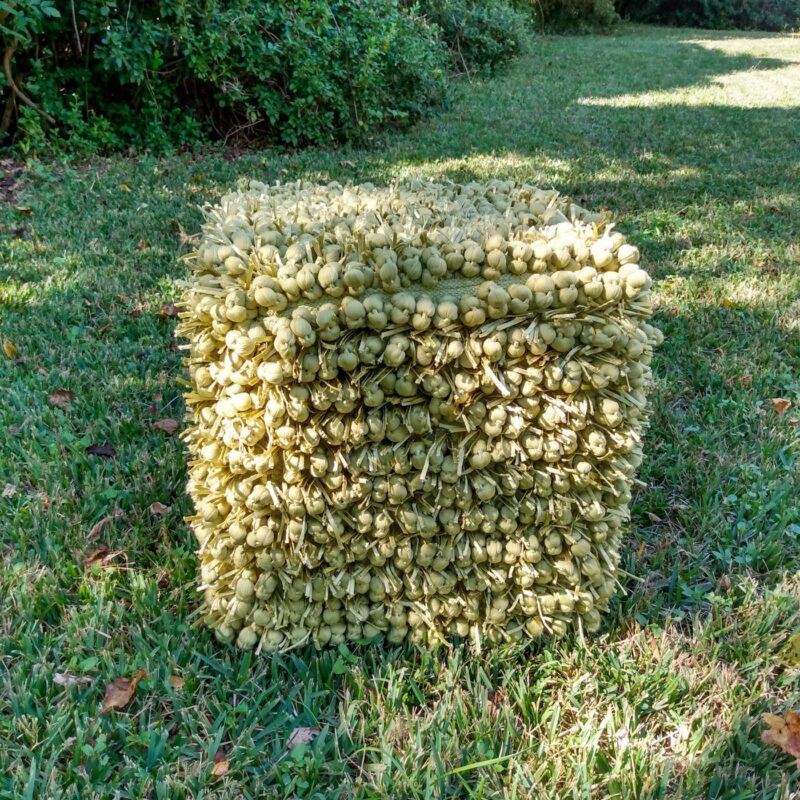
Here are a few ideas for making toys less scary.
- Always work on fear in a big, open space and let your horse leave if they choose
- Use toys with a single color instead of bold patterns
- Choose a toy with soft or flexible texture instead of hard edges
- Reduce extra movement – tape down or remove flaps, tie down toys securely, etc
- Use quiet toys that don’t make sudden or loud noises (like rustling paper)
- Introduce new items when trusted equine friends are present
- Pair the toy with free, tasty treats nearby and move them closer to the toy as their confidence grows
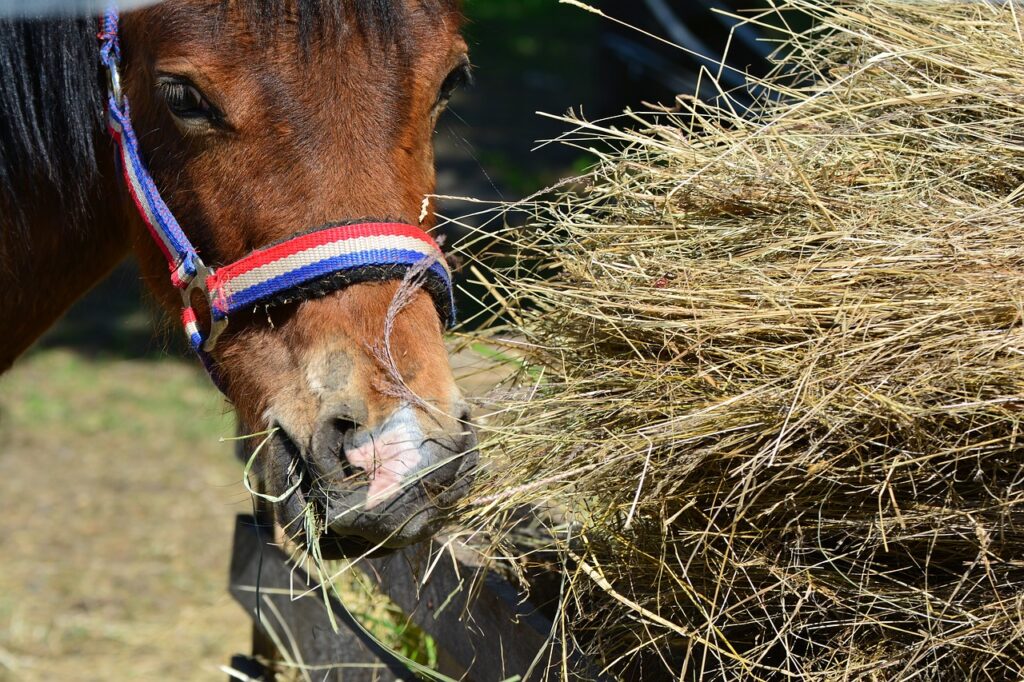
Image by congerdesign from Pixabay
As the horse becomes more and more comfortable with your toned-down, modified enrichment, you can offer it more and more normally. Eventually, you (hopefully) won’t need to “fear-proof” the item at all.
Professional Help when Your Horse is Scared of Toys
If your efforts aren’t working or you want another set of eyes, a skilled equine behavior specialist can help your horse overcome their fear.
Look for a behaviorist or trainer experienced in using positive reinforcement to address anxiety. A behavior consultant will observe what’s happening and create a science-backed plan to help your horse overcome their neophobia. For horses who need intensive help, bringing in a professional is a good investment in your horse’s quality of life.
The Confidence Snowball
The good thing about addressing neophobia is that each time the horse experiences enrichment in a positive way – especially after overcoming their initial fear – it helps them build confidence. Every time your horse has a good experience, they become less afraid of the toy.
Over time, your horse will learn that their toys are fun – and new toys are safe, too! Their confidence is like a snowball, getting bigger the further it goes. That’s a huge payoff for your efforts.
When your horse is scared of toys, it can be surprising and disappointing. But recognizing neophobia and understanding its purpose for animals will help empower you to assist your horse in overcoming their fear. With a little work, your horse can become more confident and engaged, and get all the benefits of their toys.
Not Scary Horse Enrichment Ideas
If your horse is a Nervous Nelson, start their toy experience with some enrichment ideas that are simple and nonthreatening. Try these for inspiration:
Cardboard Fruit Carton Snuffler (great for horses too nervous to use a cardboard Forage Box)
Essential Oil Spritzers for basic sensory enrichment
Pingback: 5 Reasons Your Horse Is Ignoring Enrichment – Enriching Equines